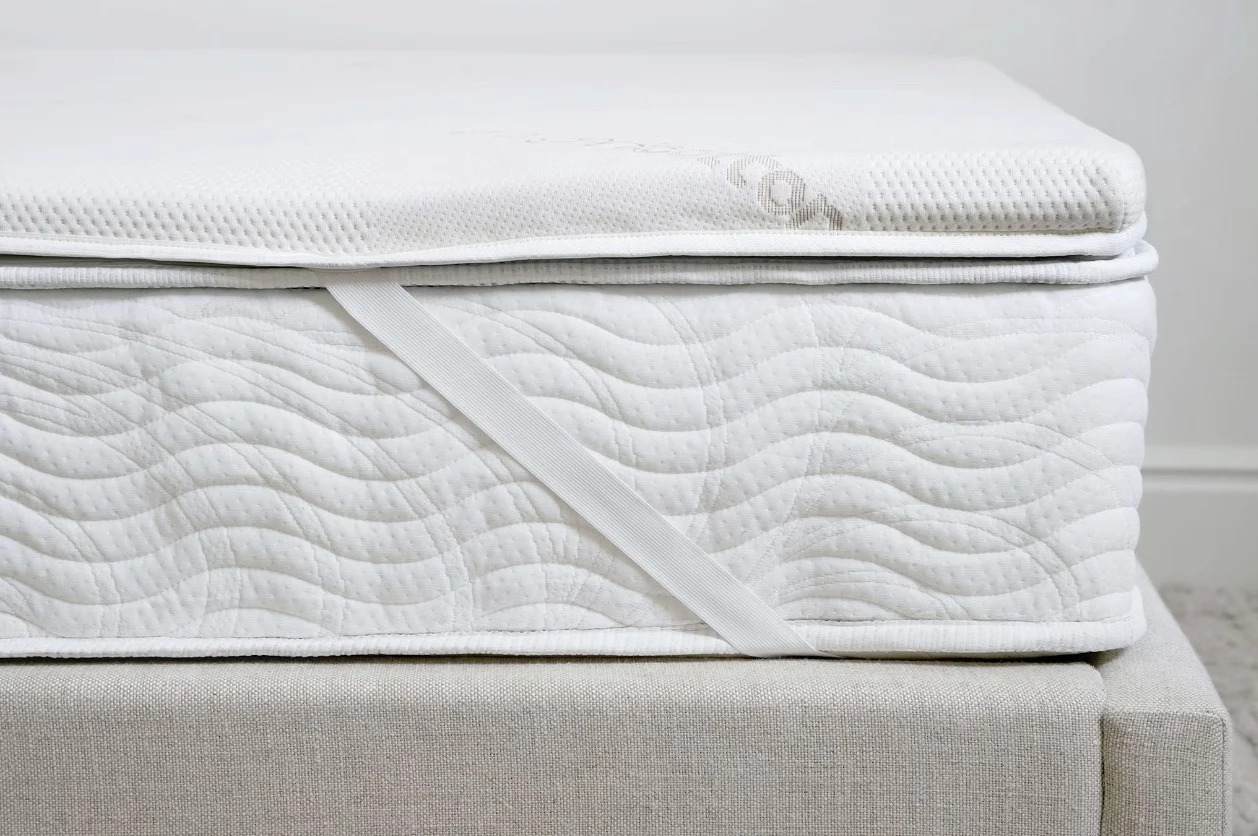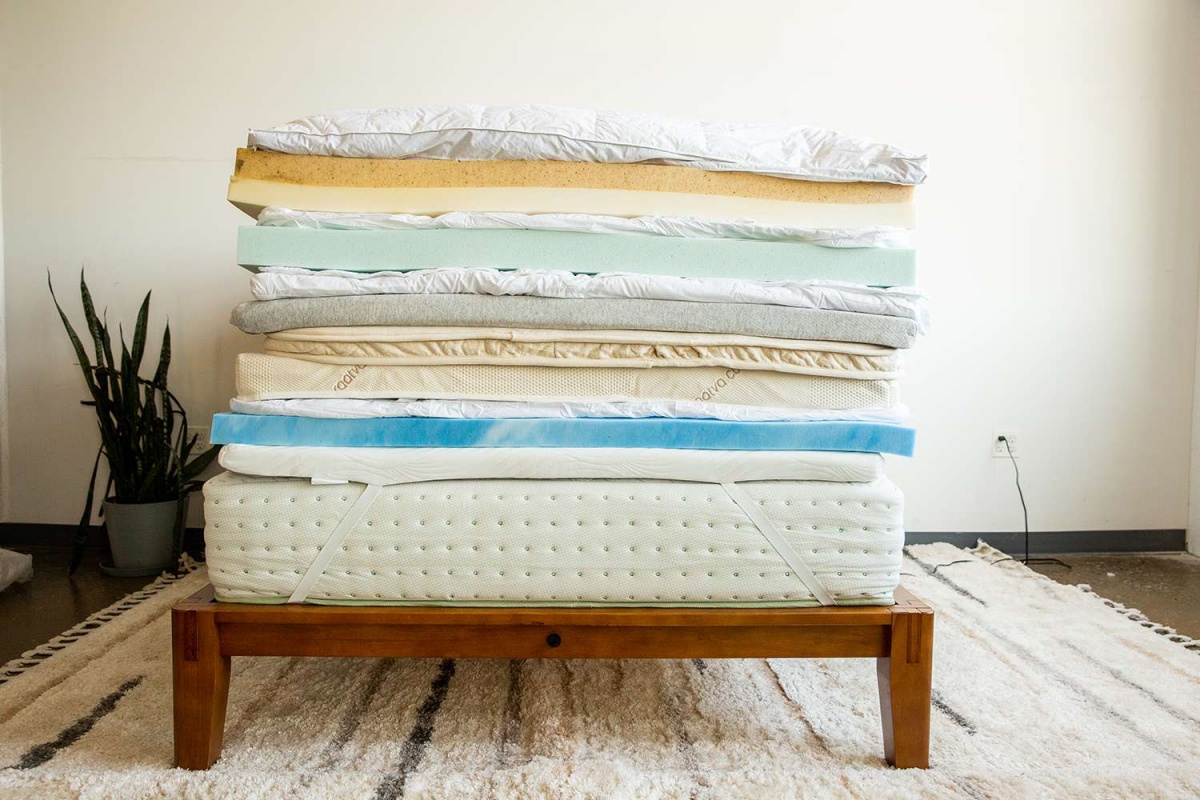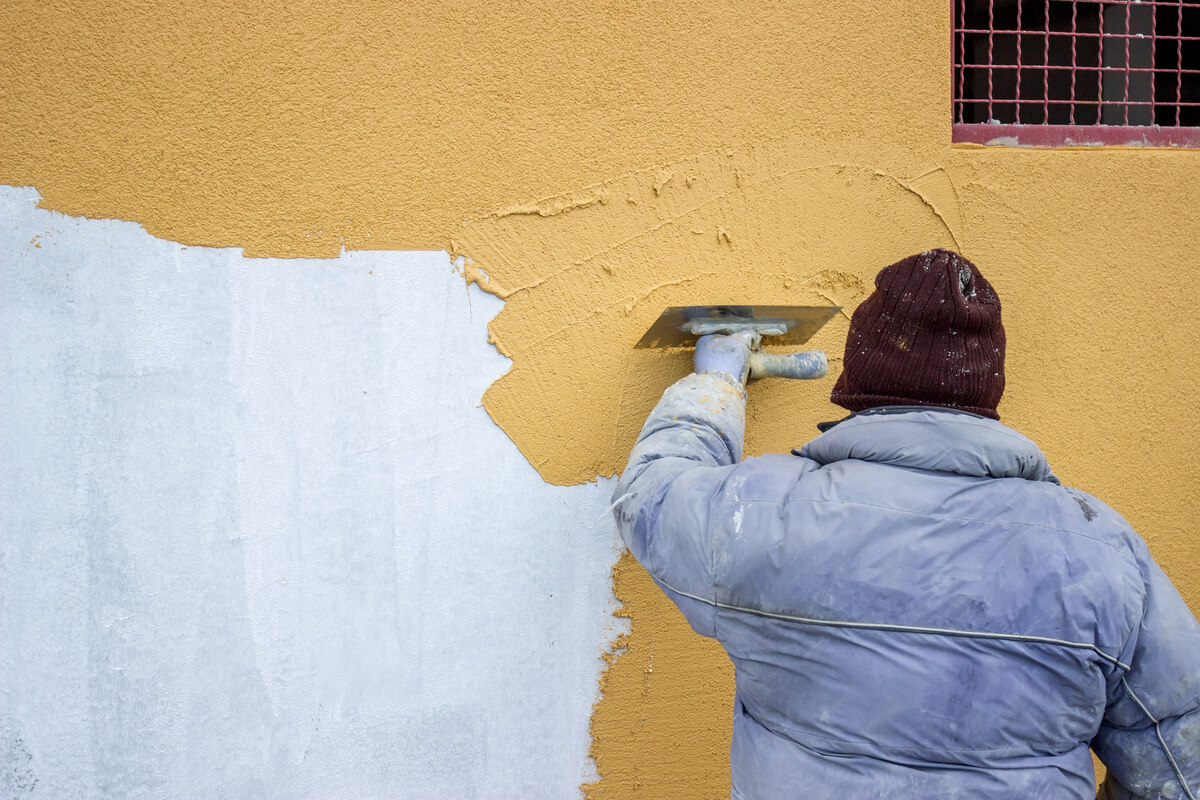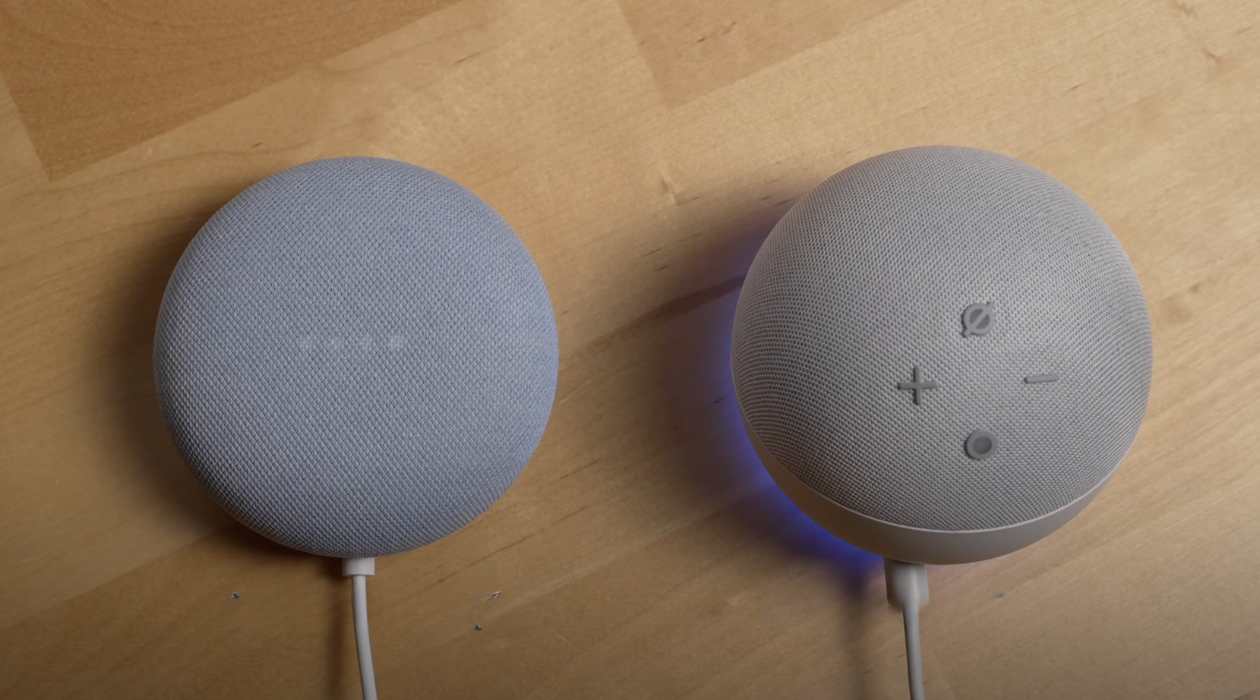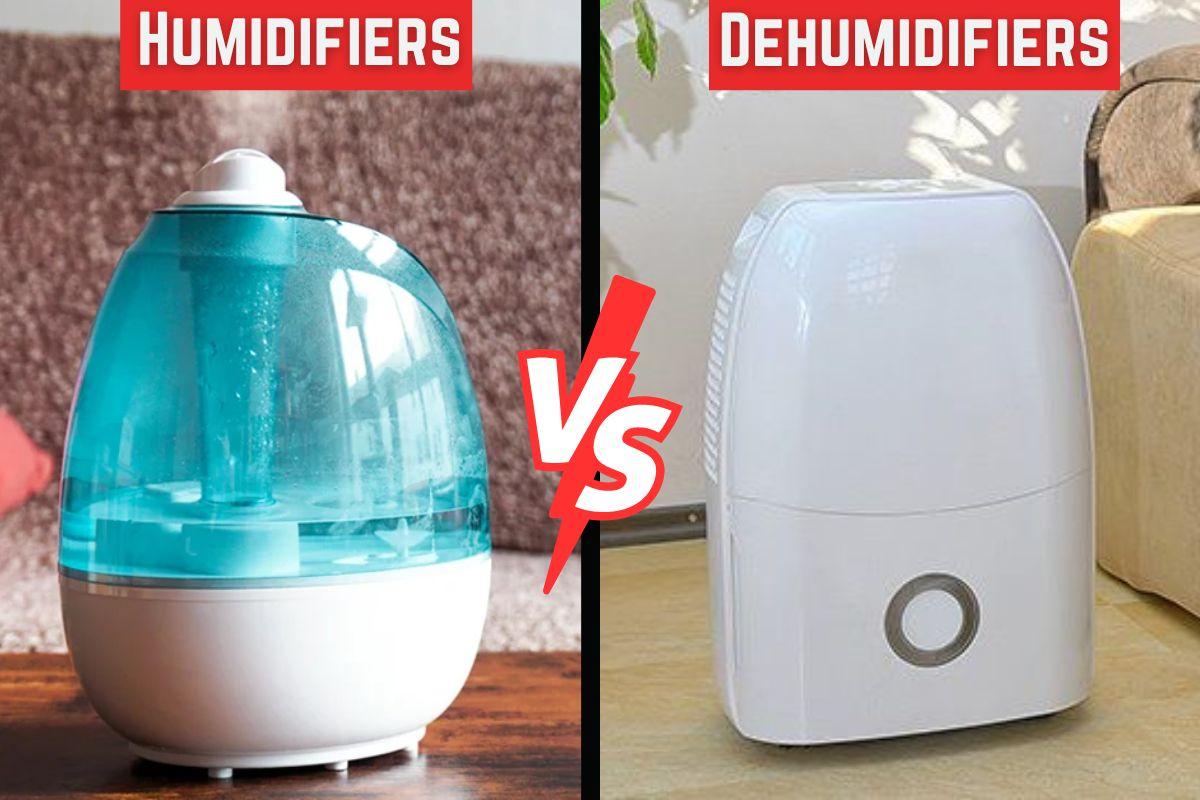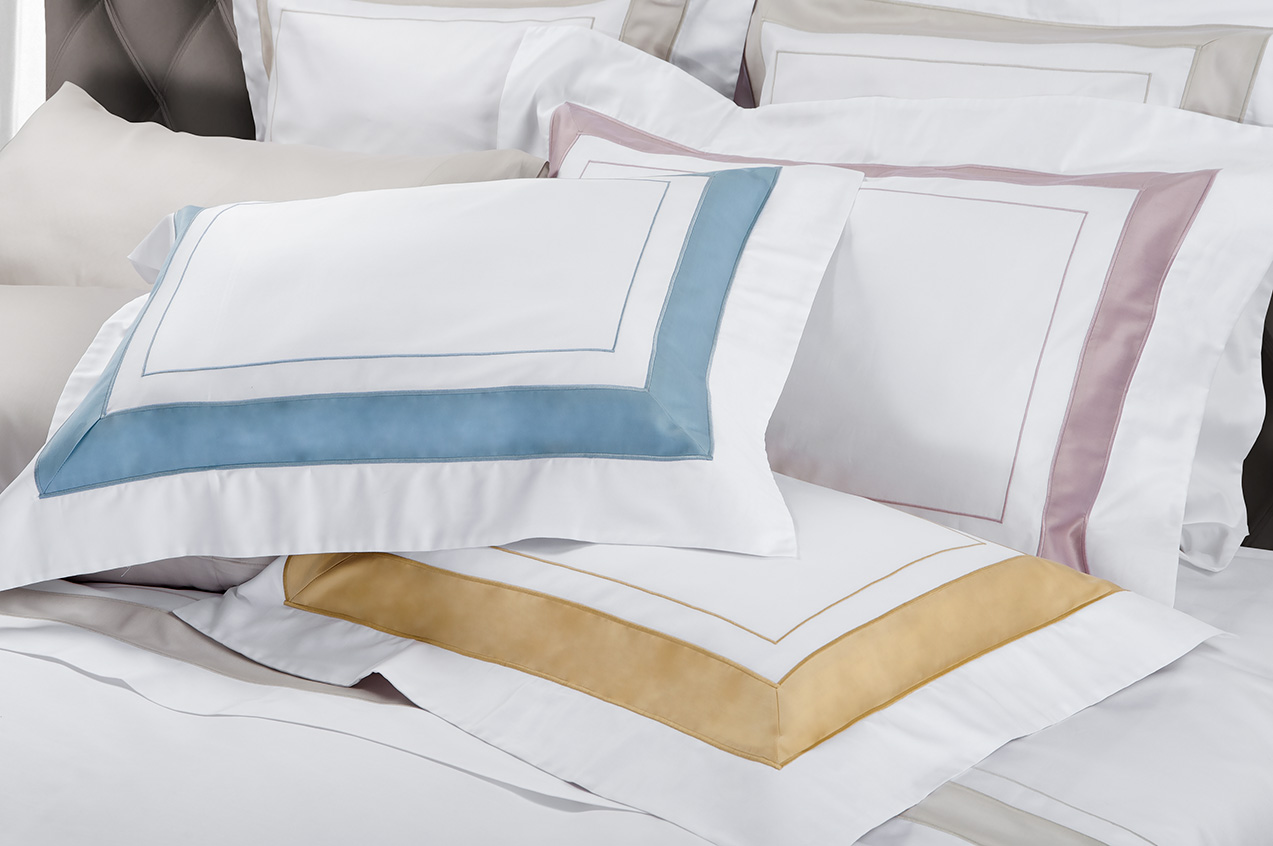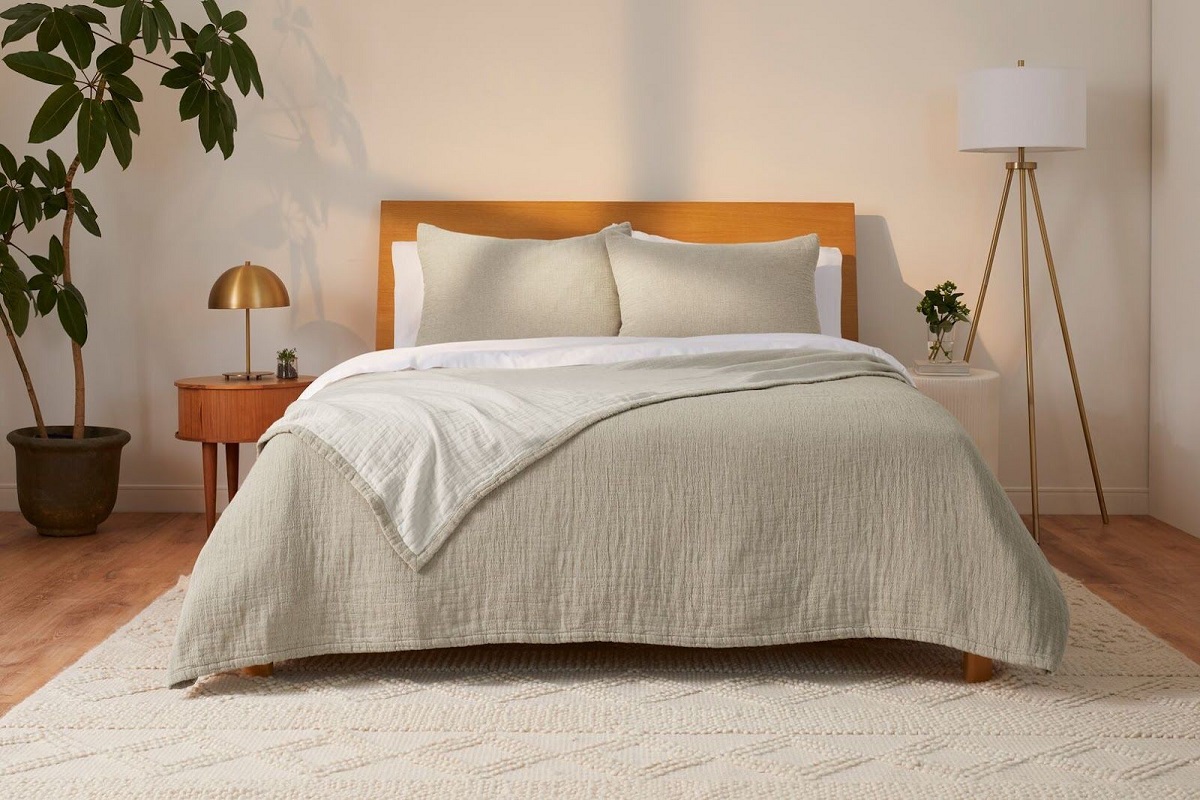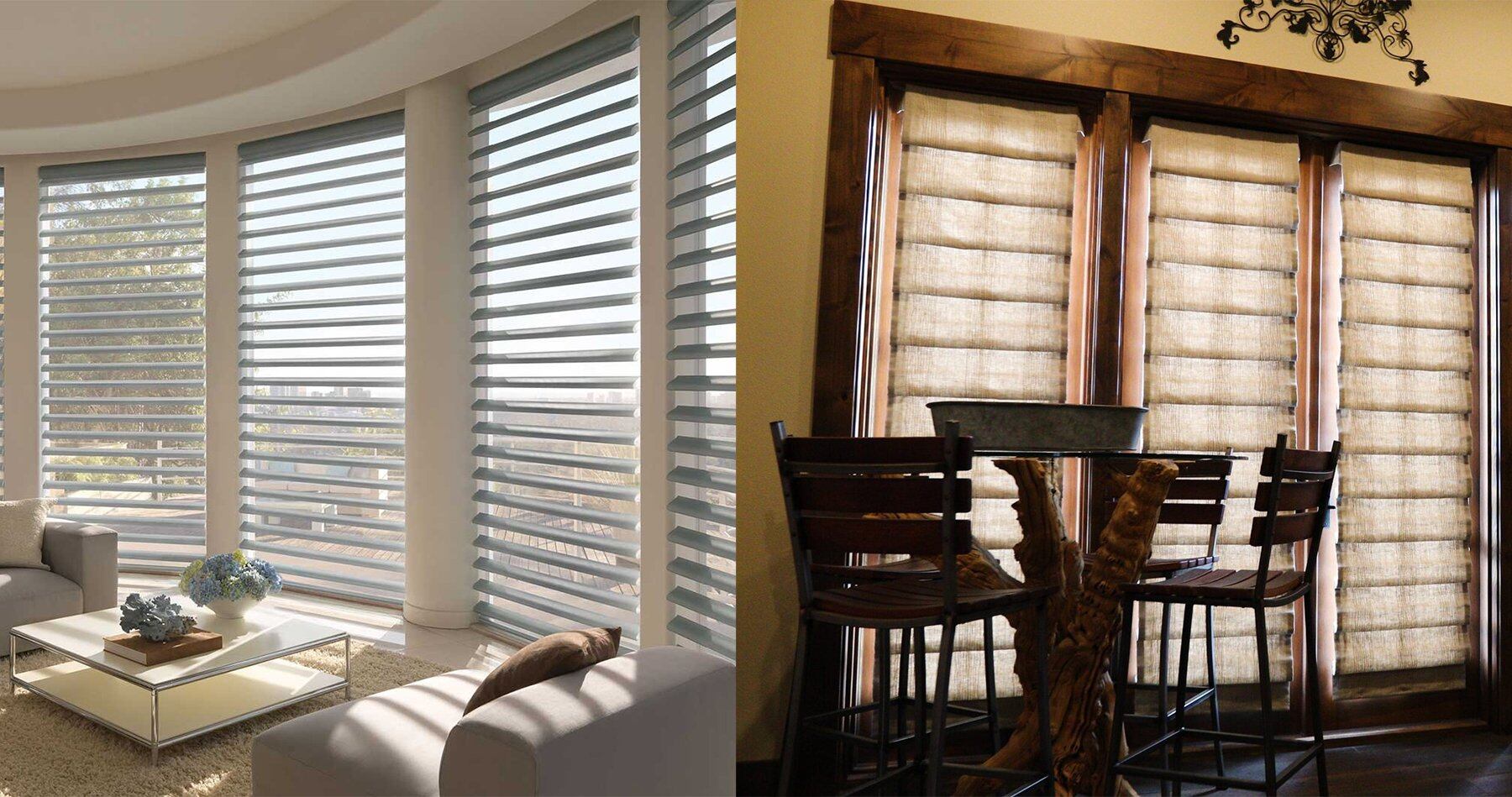Home>Furniture>Bedroom Furniture>What Is The Difference Between A Mattress Topper And A Mattress Pad
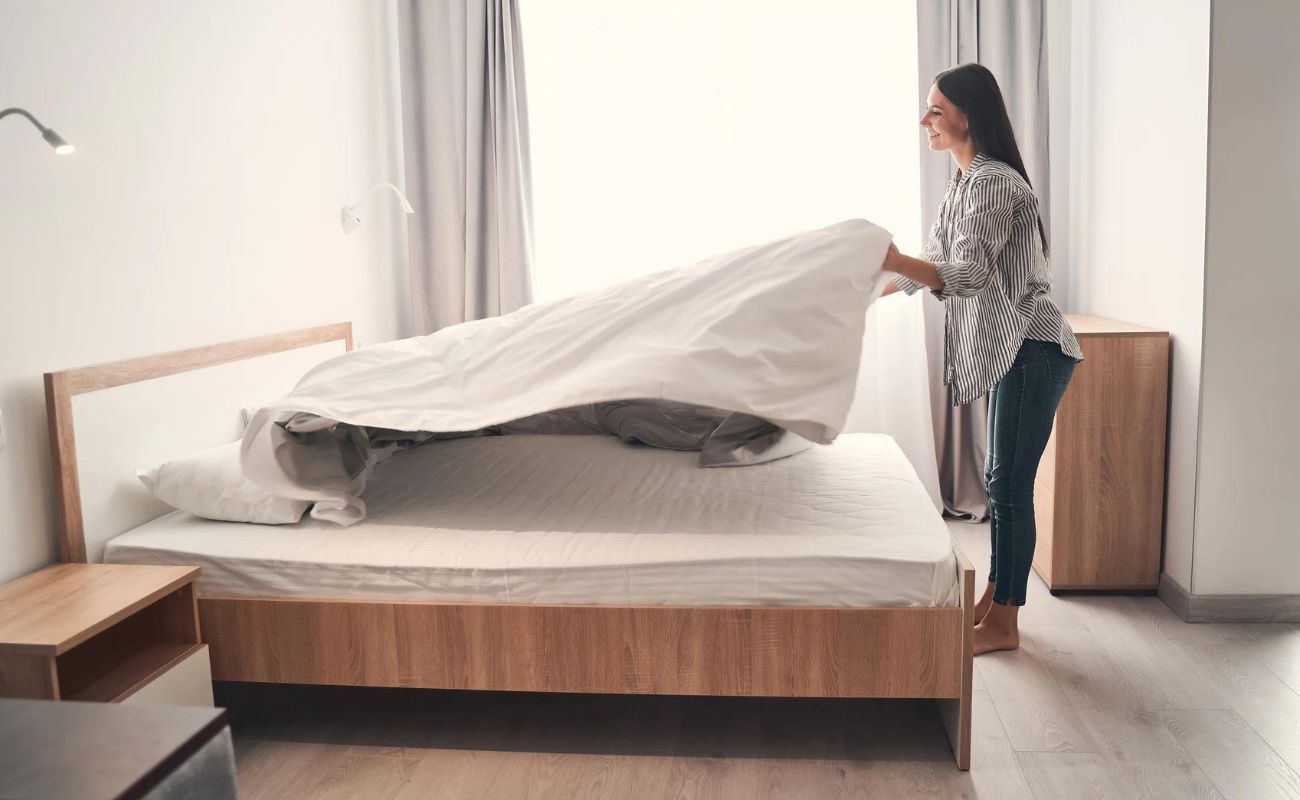

Bedroom Furniture
What Is The Difference Between A Mattress Topper And A Mattress Pad
Modified: January 18, 2024
Discover the key distinctions between a mattress topper and a mattress pad. Enhance your bedroom furniture with the perfect bedding accessory.
(Many of the links in this article redirect to a specific reviewed product. Your purchase of these products through affiliate links helps to generate commission for Storables.com, at no extra cost. Learn more)
Introduction
When it comes to enhancing the comfort and quality of your sleep, the right bedding can make a significant difference. Mattress toppers and mattress pads are two popular options designed to improve the overall feel and functionality of your mattress. While they may seem similar at first glance, there are some key differences between the two that can greatly impact your sleeping experience.
In this article, we will delve into the definitions, purposes, types, pros and cons, and key differences between mattress toppers and mattress pads. By understanding these factors, you will be equipped with the knowledge to make an informed decision about which option is best suited for your specific needs and preferences.
Key Takeaways:
- Elevate your sleep experience with a mattress topper, offering enhanced comfort, pressure point relief, and temperature regulation. Choose based on your desired firmness and material preferences for a personalized touch.
- Safeguard your mattress with a protective mattress pad, offering spill and allergen protection, hygiene maintenance, and subtle comfort enhancement. Consider waterproofing, hypoallergenic properties, and thickness for tailored benefits.
Definition of a Mattress Topper
A mattress topper is a removable layer of padding that is placed on top of your existing mattress. It is designed to provide extra cushioning and support, transforming the feel and comfort level of your bed. Mattress toppers are usually made of materials such as memory foam, latex, down, or feather, and are available in various thicknesses and densities.
The primary purpose of a mattress topper is to modify the firmness or softness of your mattress according to your personal preference. It can add an additional layer of comfort and relieve pressure points, promoting better spinal alignment and easing joint pain. Additionally, a mattress topper can improve the overall durability and lifespan of your mattress by acting as a protective barrier against spills, stains, and normal wear and tear.
Purpose of a Mattress Topper
The purpose of a mattress topper goes beyond simply adding an extra layer of padding. Here are some key reasons why people opt for using a mattress topper:
- Enhanced Comfort: A mattress topper can significantly enhance the comfort of your sleep surface by providing additional cushioning and support. Whether you have a firm mattress that feels too hard or a sagging mattress that lacks proper support, a mattress topper can modify the feel and create a more comfortable sleeping environment.
- Pressure Point Relief: Many individuals experience pressure points on certain areas of their body, such as the hips, shoulders, or lower back. A mattress topper, particularly one made of memory foam or latex, can contour to your body shape and alleviate pressure points, leading to a more restful sleep and reduced discomfort.
- Improved Spinal Alignment: Maintaining proper spinal alignment is crucial for a healthy sleep posture. A mattress topper can help align the spine by providing adequate support to the natural curves of your body, resulting in reduced back pain and a more comfortable sleep experience.
- Temperature Regulation: Some mattress toppers are designed with cooling properties to regulate body temperature and prevent overheating during sleep. These toppers feature advanced materials, such as gel-infused memory foam or breathable latex, which promote airflow and dissipate heat.
- Protection and longevity: In addition to enhancing comfort, a mattress topper can serve as a protective layer for your mattress. It acts as a barrier against spills, stains, dust mites, and normal wear and tear, thereby extending the lifespan of your mattress.
Overall, the purpose of a mattress topper is to customize the feel of your mattress, provide additional support and comfort, relieve pressure points, and protect your mattress investment. It is a versatile bedding accessory that can greatly enhance the quality of your sleep and contribute to your overall well-being.
Types of Mattress Toppers
There are various types of mattress toppers available on the market, each with its own unique characteristics and benefits. Here are some of the most common types:
- Memory Foam: Memory foam mattress toppers are popular for their exceptional contouring ability. They are designed to conform to your body shape, providing personalized support and pressure point relief. Memory foam toppers are available in different densities, with higher density foams offering more support and durability.
- Latex: Latex mattress toppers are known for their responsiveness, bounce, and natural durability. They offer excellent support and contouring without the sinking feeling often associated with memory foam. Latex toppers are available in both natural and synthetic options, catering to different preferences and budgetary constraints.
- Feather and Down: Feather and down mattress toppers are made from a combination of feathers and soft down clusters, offering a plush and luxurious feel. These toppers provide a fluffy surface and can provide gentle cushioning. However, they may not offer as much support as other types.
- Wool: Wool mattress toppers are naturally breathable and can help regulate body temperature. They offer excellent moisture-wicking properties, keeping you cool in summer and warm in winter. Wool toppers also provide a soft and plush surface, with natural resistance to dust mites and other allergens.
- Gel-infused: Gel-infused mattress toppers are designed to offer a cooler sleep experience. The gel beads embedded within the foam or latex help dissipate heat and regulate body temperature. These toppers are ideal for individuals who tend to sleep hot or live in hotter climates.
- Pillow-top: Pillow-top mattress toppers feature an extra layer of plush padding sewn onto the top. They can add a luxurious and cushioned feel to your mattress, enhancing comfort and support. Pillow-top toppers are available in various materials, such as memory foam or fiberfill.
When selecting a mattress topper, it is important to consider your personal preferences, sleeping position, and any specific needs or sensitivities you may have. Additionally, be mindful of the thickness and density of the topper, as these factors can affect its performance and durability.
Pros and Cons of Using a Mattress Topper
Using a mattress topper can have several advantages, but it’s crucial to be aware of the potential drawbacks as well. Let’s explore the pros and cons of using a mattress topper:
Pros:
- Enhanced Comfort: A mattress topper can significantly enhance the comfort of your mattress, providing a softer or more supportive sleeping surface based on your preference.
- Pressure Point Relief: By conforming to your body shape, a mattress topper can alleviate pressure points, reducing discomfort and promoting better sleep quality.
- Customization: Mattress toppers come in various materials and thicknesses, allowing you to customize the feel and firmness of your mattress to suit your individual needs.
- Protection and Durability: A mattress topper acts as a protective layer, safeguarding your mattress against spills, stains, and normal wear and tear, thus extending its lifespan.
- Cost-Effective Option: Purchasing a mattress topper can be more affordable than buying a completely new mattress, making it a cost-effective solution for improving your sleep surface.
Cons:
- Additional Height: Mattress toppers can add extra height to your bed, which may require adjustments to fitted sheets or bed frames.
- Maintenance: Depending on the type of material, certain mattress toppers may require regular maintenance, such as fluffing or spot cleaning.
- Heat Retention: Some mattress toppers, notably those made of memory foam, may retain body heat, causing discomfort for those who tend to sleep hot.
- Fit: Finding a mattress topper that fits securely and stays in place on your mattress can sometimes be a challenge, especially for larger or irregularly shaped beds.
- Not a Fix for an Unsupportive Mattress: While a mattress topper can enhance comfort, it may not fully address the issue of an unsupportive or worn-out mattress. In some cases, a new mattress may be a more suitable solution.
Considering these pros and cons can help you weigh the benefits and drawbacks of using a mattress topper, assisting you in making an informed decision that aligns with your sleep needs and preferences.
Definition of a Mattress Pad
A mattress pad, sometimes referred to as a mattress protector, is a thin layer of fabric that is placed on top of your mattress and secured with elasticized corners or straps. Unlike a mattress topper, which primarily focuses on enhancing comfort and support, a mattress pad primarily serves as a protective barrier for your mattress.
A mattress pad typically features a quilted or padded design, providing a slight layer of cushioning. It is constructed with materials such as cotton, polyester, or a blend of both. Some mattress pads come with added features for specialized functionality, such as waterproofing, hypoallergenic properties, or temperature regulation.
Purpose of a Mattress Pad
The primary purpose of a mattress pad is to protect your mattress from spills, stains, allergens, and general wear and tear. However, it offers additional benefits as well. Let’s explore the purposes of a mattress pad in more detail:
- Protection: One of the main functions of a mattress pad is to provide a protective barrier for your mattress. It acts as a shield against spills, accidents, and stains, preventing them from seeping into the mattress and potentially causing damage. A mattress pad can significantly extend the lifespan of your mattress, saving you money in the long run.
- Hygiene: Mattress pads help maintain a clean and hygienic sleeping environment. They protect against dust mites, bed bugs, and other allergens that can accumulate in your mattress over time. By using a mattress pad, you can reduce the risk of allergies and respiratory issues associated with these common allergens.
- Comfort: While not as thick as mattress toppers, mattress pads can provide a subtle layer of cushioning, adding a touch of extra comfort to your mattress. The quilted or padded design of the mattress pad can create a softer sleep surface, enhancing your overall sleep experience.
- Regulation of Temperature: Some mattress pads are designed with temperature-regulating properties. These pads may use breathable materials or incorporate cooling technology to wick away moisture and maintain a comfortable sleep temperature throughout the night.
- Noise Reduction: Certain mattress pads, particularly those made with quilted or padded materials, can help reduce noise caused by mattress movements. This can be particularly beneficial if you or your partner tend to toss and turn during sleep, minimizing disturbances for a more peaceful rest.
Overall, a mattress pad serves as a protective layer, preserving the cleanliness and longevity of your mattress. Additionally, it can provide a modest level of comfort and promote a healthier sleeping environment. When selecting a mattress pad, consider your specific needs, such as waterproofing or hypoallergenic properties, to choose the one that best suits your requirements.
Types of Mattress Pads
There are various types of mattress pads available on the market, each offering different features and benefits. Here are some common types of mattress pads to consider:
- Cotton: Cotton mattress pads are popular for their natural breathability and softness. They provide a comfortable and lightweight layer, protecting your mattress while allowing for good airflow. Cotton mattress pads are hypoallergenic and suitable for those with sensitive skin.
- Polyester: Polyester mattress pads are known for their durability and affordability. They are easy to care for and offer good moisture-wicking properties, ensuring a dry and comfortable sleep environment. Polyester pads may not be as breathable as other materials, so they are ideal for those who prefer a warmer sleep surface.
- Waterproof: Waterproof mattress pads feature a moisture-resistant layer that shields your mattress from spills, accidents, and stains. They are particularly useful for protecting against liquids and are often used in households with young children or pets.
- Quilted: Quilted mattress pads offer an added layer of comfort with their quilted design. They feature stitching patterns or individual pockets filled with plush padding, providing a cushioning effect and extra softness to your mattress.
- Hypoallergenic: Hypoallergenic mattress pads are designed to provide a barrier against allergens such as dust mites, pollen, and pet dander. These pads are made with hypoallergenic materials and are suitable for individuals with allergies or asthma.
- Cooling: Cooling mattress pads are engineered to regulate body temperature and keep you cool throughout the night. They often use materials that wick away moisture and promote airflow, ensuring a comfortable and refreshing sleep experience.
When selecting a mattress pad, consider your specific needs and preferences. If you prioritize breathability, opt for cotton or cooling pads. If you require spill protection, go for a waterproof pad. Additionally, consider factors such as hypoallergenic properties and quilting for added comfort. Ultimately, choose a mattress pad that aligns with your desired level of protection and comfort for a better night’s sleep.
A mattress topper is thicker and provides more cushioning and support, while a mattress pad is thinner and primarily used for protection against spills and stains. Consider your specific needs before choosing between the two.
Pros and Cons of Using a Mattress Pad
Using a mattress pad can provide several benefits, but it’s important to consider potential drawbacks as well. Let’s explore the pros and cons of using a mattress pad:
Pros:
- Protection: A mattress pad acts as a protective barrier, safeguarding your mattress from spills, stains, allergens, and general wear and tear. It can significantly extend the lifespan of your mattress and save you money on potential replacements.
- Hygiene: A mattress pad helps maintain a clean and hygienic sleeping environment by preventing the accumulation of dust mites, bed bugs, and other allergens in your mattress. This can reduce the risk of allergies, asthma, and respiratory issues.
- Comfort Enhancement: Many mattress pads offer a slight layer of cushioning, improving the overall comfort of your mattress. The quilted or padded design of certain mattress pads can create a softer sleep surface that adds a touch of luxury to your bed.
- Temperature Regulation: Some mattress pads are designed with temperature-regulating properties, such as breathable fabrics or cooling technology, which can help dissipate heat and maintain a comfortable sleep temperature.
- Easy Maintenance: Mattress pads are typically machine washable and easy to maintain, allowing for convenient cleaning and upkeep. This can help keep your sleep environment fresh and hygienic.
Cons:
- Minimal Thickness: Mattress pads are generally thinner than mattress toppers, providing only a modest level of cushioning. If you’re seeking significant changes to the comfort or support of your mattress, a mattress pad may not offer the desired effect.
- Fit: Ensuring the proper fit and keeping the mattress pad securely in place can sometimes be a challenge. Elasticized corners or straps may not adequately hold the pad, resulting in shifting or sliding during sleep.
- Reduced Breathability: Some mattress pads, particularly those made of synthetic materials like polyester, may not offer the same level of breathability as natural fibers. This could potentially lead to heat retention and discomfort for individuals who tend to sleep hot.
- Limitations on Firmness Adjustments: Unlike mattress toppers, which can significantly alter the firmness level of a mattress, mattress pads have minimal impact on firmness. If you require substantial changes to the feel of your mattress, a mattress pad may not be the ideal solution.
Consider the pros and cons listed above when deciding whether to use a mattress pad. Evaluate your specific needs for protection, hygiene, and comfort enhancement, as well as any potential drawbacks that may affect your sleep preferences. By making an informed decision, you can select the right mattress pad to enhance your sleep experience.
Read more: What To Look For In A Mattress Topper
Key Differences Between a Mattress Topper and a Mattress Pad
While mattress toppers and mattress pads may sound similar, there are distinct differences in their design, purpose, and functionality. Understanding these key differences will help you choose the right bedding accessory that best suits your needs. Here are the primary distinctions between a mattress topper and a mattress pad:
- Function: The core function of a mattress topper is to modify the comfort and support of your mattress, enhancing its feel and addressing specific sleep needs. On the other hand, a mattress pad primarily serves as a protective layer for your mattress, shielding it from spills, stains, allergens, and general wear and tear.
- Thickness: Mattress toppers are typically thicker than mattress pads, ranging from 2 to 4 inches in thickness. This additional padding significantly alters the feel and firmness of the mattress. In comparison, mattress pads are generally thinner, ranging from 0.5 to 1.5 inches thick, providing a more subtle layer of cushioning.
- Materials: Mattress toppers are manufactured using various materials, such as memory foam, latex, down, or feather, while mattress pads are commonly made of cotton, polyester, or a blend of both. The choice of material impacts the comfort, breathability, and other properties of the bedding accessory.
- Comfort vs. Protection: Mattress toppers are primarily designed to enhance comfort by providing additional support, pressure relief, and temperature regulation. They are ideal for individuals seeking a specific feel or addressing sleep issues. On the other hand, mattress pads focus on protecting the mattress from spills, stains, allergens, and daily wear. They offer minimal alteration to the comfort level of the mattress.
- Customization: Mattress toppers provide greater customization options for adjusting the feel and firmness of the mattress. They allow you to choose a topper material, thickness, and density that suits your preferences. Mattress pads, on the other hand, have limited customization options and offer a more uniform sleeping surface.
In summary, mattress toppers are thicker, designed to modify mattress comfort, support, and temperature regulation. They provide significant changes to the feel of the bed. In contrast, mattress pads are thinner, primarily serving as a protective layer against spills, stains, and allergens. They offer minimal alteration to the comfort level of the mattress. Consider your specific needs, such as comfort enhancement or mattress protection, when choosing between a mattress topper and a mattress pad.
Factors to Consider When Choosing Between a Mattress Topper and a Mattress Pad
Choosing between a mattress topper and a mattress pad depends on your personal preferences, sleep needs, and the condition of your mattress. Here are some important factors to consider when making a decision:
- Comfort Level: If you’re looking to modify the comfort and support of your mattress, a mattress topper is the better option. Consider the firmness level you desire and choose a topper material that caters to your specific needs, such as memory foam for contouring or latex for responsiveness.
- Mattress Protection: If safeguarding your mattress from spills, stains, and allergens is your primary concern, a mattress pad is the more suitable choice. Look for a pad that offers waterproofing or hypoallergenic properties, depending on your specific requirements.
- Thickness Preference: Determine how much additional padding you desire on your mattress. If you prefer a significant change in comfort and feel, a thicker mattress topper would be the better option. If you prefer a more subtle layer of cushioning, a thinner mattress pad may be sufficient.
- Budget: Consider your budget when making a decision. Mattress toppers, especially those made of high-quality materials, tend to be more expensive than mattress pads. Determine how much you are willing to spend while keeping your desired benefits and features in mind.
- Sleeping Position and Specific Needs: Consider your sleeping position and any specific sleep issues you may have. For example, side sleepers may benefit from a mattress topper that provides pressure point relief, while individuals who sleep hot may prefer a cooling mattress pad.
- Mattress Condition: Assess the overall condition of your mattress. If your mattress is old, worn-out, or causing discomfort, a mattress topper can provide a temporary fix by enhancing support and comfort. However, if your mattress is still in good condition but needs protection, a mattress pad would be a more suitable choice.
By considering these factors, you can make an informed decision about whether a mattress topper or a mattress pad is the right option for you. Remember to prioritize your comfort, protection needs, and any specific sleep issues you want to address. Ultimately, choose the bedding accessory that aligns with your specific preferences and enhances your overall sleep experience.
Conclusion
Choosing the right bedding accessory, whether it’s a mattress topper or a mattress pad, can greatly impact the quality of your sleep. Understanding the differences between these two options is crucial in determining which one suits your needs and preferences.
A mattress topper offers the ability to modify the comfort and support of your mattress by adding an extra layer of padding. It can provide enhanced comfort, pressure point relief, and temperature regulation. However, it may be pricier and may require careful consideration of thickness and material.
On the other hand, a mattress pad primarily serves as a protective layer for your mattress, shielding it from spills, stains, and allergens. It offers minimal alteration to the comfort level of your mattress but provides benefits such as mattress protection, hygiene, and temperature regulation.
When choosing between a mattress topper and a mattress pad, consider factors such as your desired comfort level, need for mattress protection, thickness preference, budget, and specific sleep needs. Evaluate the condition of your mattress as well, as this can influence your decision.
In the end, both mattress toppers and mattress pads have their distinct advantages. The key is to choose the one that aligns with your personal preferences, sleep needs, and budget. Whether you’re looking to enhance comfort, protect your mattress, or address specific sleep issues, there is an option available to fit your requirements.
By carefully considering these factors and understanding the differences between mattress toppers and mattress pads, you can make an informed decision that will ultimately lead to a better and more restful night’s sleep.
Frequently Asked Questions about What Is The Difference Between A Mattress Topper And A Mattress Pad
Was this page helpful?
At Storables.com, we guarantee accurate and reliable information. Our content, validated by Expert Board Contributors, is crafted following stringent Editorial Policies. We're committed to providing you with well-researched, expert-backed insights for all your informational needs.
